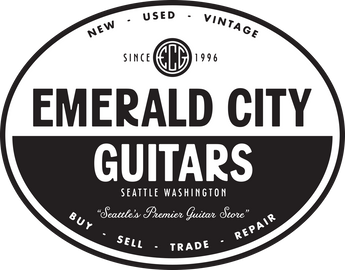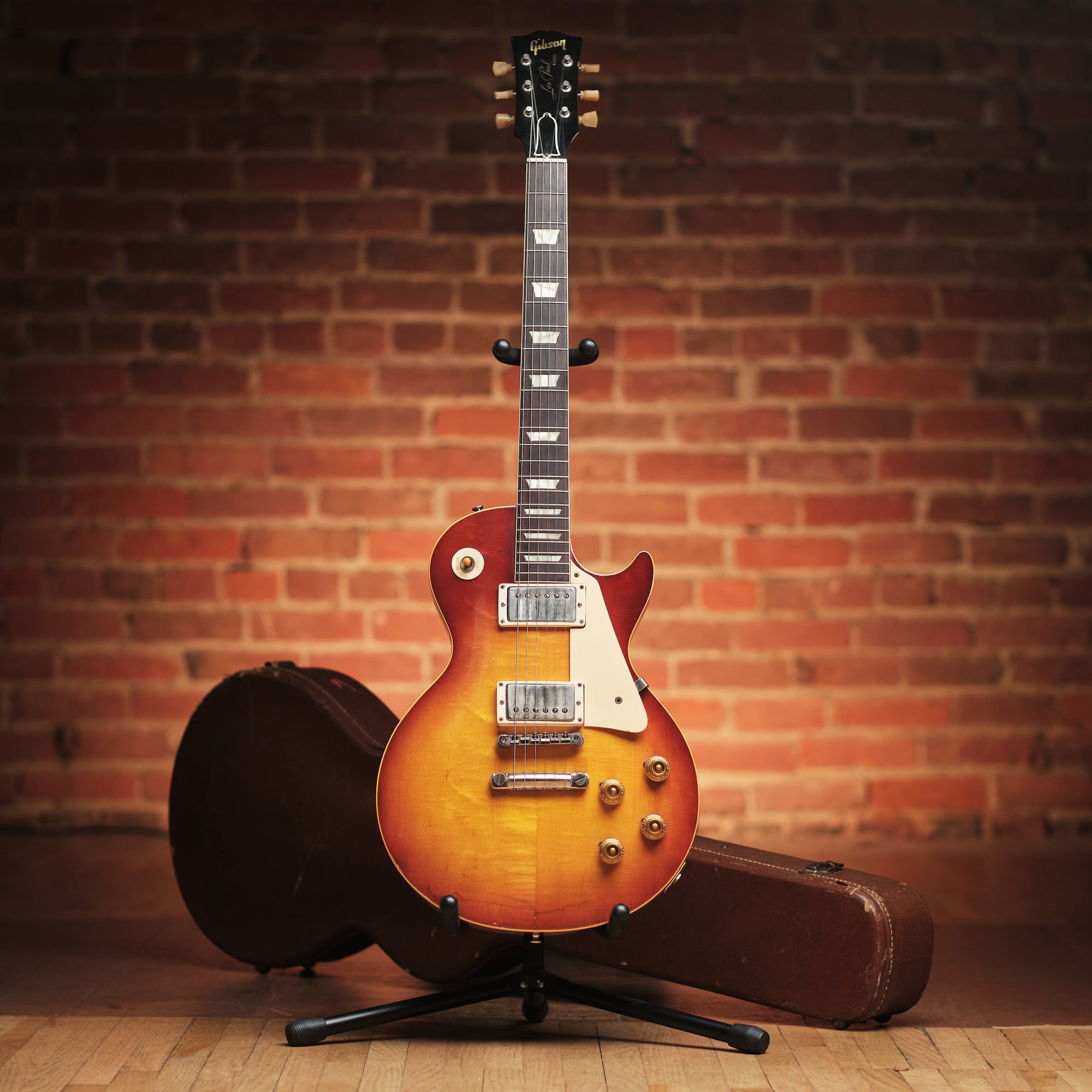This Week at Emerald City Guitars!
Writing by Tyler Geske | Photos by Ken Lapworth
1960 Gibson ES-125 3/4, 1960 Gibson Les Paul Jr 3/4, Gibson LG 3/4

Well into my adult years now, I still feel a sharp impulse to jump onto a coin-operated horse every time I see one out in front of a grocery store. If you can relate to this, I would guess you’d have a hard time walking past this trio without snatching one up.
Looking like one hell of a mid century Christmas morning, this collection is a scaled down summary of Gibson’s guitar offerings at the time. For the young gospel singer, an LG 3/4. The aspiring jazz cat is more than covered with a 3/4 ES-125. Feel the need to rebel against your parents while perforating your own ear drums? The 3/4 Les Paul Special will infuriate 4/4 of your closest neighbors. The 22.75” scale may sound too short for some, but reasonably wide necks and full-size hardware make these “student” instruments feel equally at home on the couch with a full sized human. What a perfect opportunity to pick up another vintage Gibson under the guise of providing your kids with a musical education.
1964 Fender Jaguar, 1965 Fender Jazzmaster, 1966 Fender Electric XII

It’s widely reported that Candy Apple Red was Leo’s favorite Fender color, and it isn’t difficult to see why. Every other custom color was picked right off the Dupont color chart, but Fender had CAR custom mixed to its exact specification.
It was also the only Fender option that required a more labor intensive multi-step color coat, using a metallic silver or gold base coat with a translucent red topcoat for superior richness and depth.
(Gold undercoats generally began replacing silver in late ’65, can you spot the difference?)
These three offset examples were Fender’s top of the line at the time, so the 5% custom color upcharge was even more of a statement. As if that wasn’t enough, the subtle class of a matching headstock puts this trio of Fenders in a league of their own.
1953 Fender Precision Bass “Ron”

If this ’53 P Bass is Ron, then I don’t want to be right. Born in an age when the upright bass was the undisputed king, I imagine the Precision’s entry into the market looked a bit like a newborn giraffe trying to walk for the first time. Gangly and strange as its appearance may have been, it didn’t take long for musicians to get on board with the idea.
A smaller, lighter, louder bass that could be easily operated by a guitarist? Most agreed, it would pay back its $199 retail price in no time. While neither fretted nor electric basses were a new idea at the time, the P Bass was undoubtedly miles ahead of previous attempts by every imaginable metric and became the industry standard overnight. (For decades, musicians referred to any solid body electric bass ubiquitously as a “Fender bass.”)
Over the years the model has undergone a number of modernizations, but these first generation examples are a shrine to Leo’s lifelong obsession with simplicity. An Ash slab body, one piece Maple neck, and the most basic single coil pickup imaginable make this model a perfectly complimentary sibling to the iconic blackguard Telecaster. Give us a call and take home one of each.
1956 Fender Stratocaster

Our main objective as a vintage guitar dealer is to connect our clients with the most amazing instruments in the world. Sometimes, though, it can feel like the instruments themselves have more of a say in their journey than we do.
Such is the case with this 1956 Strat. It was purchased brand new in Nashville by a pair of young brothers who performed extensively. For decades, the duo took turns playing this Strat (while the other played bass) on nearly every local stage Music City had to offer. If a guitar could ever feel fulfilled, I’m sure being a working man’s Strat in Nashville during the golden age of Country music would do the trick. After nearly 60 years of faithful service, the brothers decided that it was time to part with their guitar and reached out to us here at ECG.
As fate would have it, it was at around this time that we were contacted by our dear friends and Country music royalty the Brothers Osborne. They mentioned that they were in the market for a Strat, and we wasted no time relaying this guitar’s unlikely story. Needless to say, it wasn’t long before the Strat was on a plane headed back to Nashville for a second life with a new set of brothers. The next several years saw this guitar played on countless stages all over the world in front of thousands of fans. It only found its way back to us recently when the Brothers had the opportunity to trade it in towards a once in a lifetime ’44 D-28. If you’re interested in this guitar but can’t quite scrape up the cash, I’d suggest reaching out to a sibling.
1960 Fender Telecaster

When discussing slab board Fenders, the Stratocaster is likely the first model that springs to mind. While this bias is understandable, getting your hands on this guitar would likely make you think twice.
The 60s Telecaster may not enjoy the same hype as models from the previous decade, but the advent of the Rosewood fretboard brought with it a palette of interesting new tones. Generally warmer than its Maple equivalent, the risk of icepick trebles from the bridge pickup are mostly mitigated while still retaining its signature clarity. The tonal affects of an Alder body as opposed to the earlier Ash examples is the subject of contentious debate and should not be discussed in mixed company. This particular example is all original apart from a world-class refret and nut replacement executed by famed Baton Rouge luthier Holger Notzel. Pictured here with a 1962 Fender Princeton Amp.



